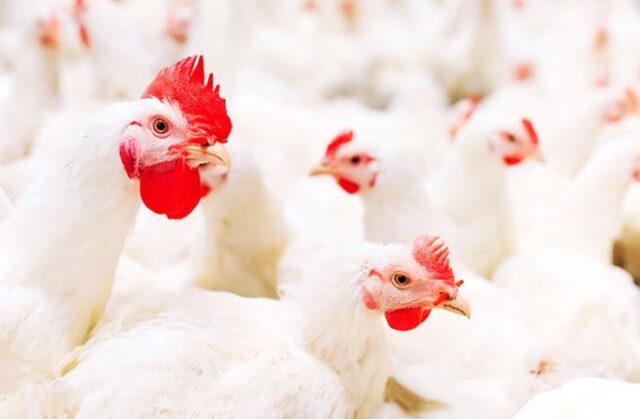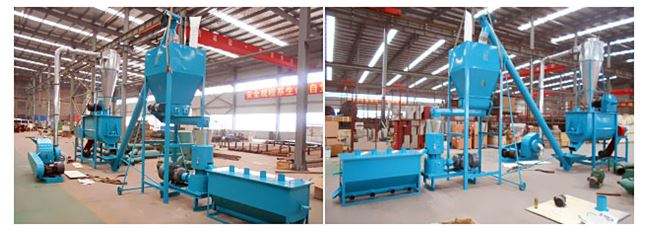
The Indian animal feed industry completed its 57 golden years in 2022. For the last few years, the industry is undergoing an exciting phase of growth, and this trend is expected to continue in the coming years as well. This is a sizeable and scalable industry, one which is still quite untapped and hence has a great potential to be evolved on a global commercial level. This article thus aims to highlight the achievements of this industry as well as information about what makes it worth putting resources into for the coming years while not ignoring the hurdles that might be experienced in the process.
This is a well-known fact that the animal feed market in India is classified into three broad categories: Aqua Feed, Poultry Feed, and Cattle Feed. The poultry feed market has mostly been dominating in terms of its share in the animal feed market with almost 44% share globally. But interestingly of late, the aqua feed segment, which has been a late starter, has seen the maximum growth out of the three segments.

Though a major portion of the market is unorganized, the total size of the remaining portion which comprises the organized compound feed industry is INR 306.9 billion by value in India, and growing for the past few years with a growth rate of approximately 8%. Several factors which have been predominantly working towards this growth include the untapped potential of the market, ever-increasing livestock population, growth of the end-user industries, and the increase in domestic consumption of the animal products.
Also, increase in the purchasing power of the population as well as favorable demographics of the country, from rural areas towards metros, are contributing to the same. The increase in disposable incomes in the metro cities is making people consume more animal products, as dairy products as well as meat, fish and eggs, which in turn, requires more feed of better quality. This is a major factor which will drive growth in the animal feed sector.
India currently has the highest buffalo population, the second-highest goat and cow population, and the third-highest sheep population which is a clear indicator of how important a role feed market has to play in meeting the demand for feed products. Even the government has now realized the need to implement policies and schemes under its 12th Five-Year Plan in the effort to improve the status of our animal feed industry and support the future demand.
Different Feed Industry Sectors:
The growth in the poultry industry and increasing demand for chicken per person which is already high in urban areas and now having its impact in rural areas as well. The cheaper availability of chicken is going to drive the poultry feed industry at a faster rate. India’s consumption of eggs per person is lower on average than many other developing countries despite India being the third-largest egg producer in the world. There is an immense scope for improvement in domestic consumption of eggs with better awareness for its health benefits, through designer eggs and hence a scope for improvement in the poultry feed sector. Also, stable feed prices, entry of more organized players and higher integration in the poultry feed industry will drive its growth.
Cattle Feed
The cattle feed business is currently already growing at a whopping CAGR of more than 30% since the milk producers have now started replacing the traditional feed with more nutritionally balanced compound feed, having realized the tangible benefits in terms of yield improvement. With one of the highest livestock population, India’s cattle feed industry is not really tapping the entire potential of manufacturing feed for its animals. India is thus, an attractive destination for international cattle feed manufacturers to enter and meet the growing feed demand clearly indicating that the sector has high potential for further growth and replacing the huge segment of unorganized players from this market.
Aqua Feed
The aquaculture industry in India is suddenly thriving with a higher demand in the shrimp market which is leading to a sudden shooting up of growth in the aquafeed industry. There is also an increase in the demand for fish from India both domestically and internationally which requires more effort from the aqua feed market to maintain the demand for high quality fish available in India. The demand for fish is seeing a rise, especially globally, due to its high protein value, and comparatively considered to be a safer. Fish production is yet another huge initiative towards ensuring food security. The only major concern currently is that majority of aquaculture practitioners in India still depend on traditional feed due to its low price and easy availability. This is responsible for a slow transition towards commercial feed in our country. Hence, this is the opportune moment for international aqua feed industries or even new domestic players to come and establish themselves in the market.

Factors Affecting the Domestic Feed Market and Scope of New Companies
The rising purchasing power of the Indian population, changing food habits with this and an increasing exposure to global cuisines are a major factor affecting the positive growth of the feed industry in India, who are now consuming a higher proportion of poultry as well as dairy products. A healthy GDP growth and the increasing urbanization are complementing the same. The domestic poultry industry has seen maturation from backyard activity to integrated poultry farming on a large scale along with the acceptance of modern technology. This is currently an ongoing process with the transformation from a fragmented sector to now a more organized one, and is further driving the industry’s growth on an overall level. Since most of all the source of carbohydrates in feeds are cereal grains, a fluctuation in the prices of these greatly affects the feed prices and hence the domestic feed market. Over the past few years, feed prices had seen an uptrend backed by high maize prices, continued strong demand from the poultry sector and limited supply.
The prices have now been stable and are an important factor in driving its growth. Also poultry meat is preferred over other meats since it is considered more hygienic, more nutritious and is available at relatively cheaper prices than the others due to which the poultry feed industry in particular is seeing good growth. In recent years, processed chicken segment has geared up as well and is expected to grow further. The annual per capita poultry meat consumption in India has seen an increase but it is still one of the lowest on a global level. This is a brilliant opportunity for further integration as well as growth in the industry offering a chance to new companies to enter the market. Similarly the cattle feed industry as well as the aqua feed industry are either largely unorganized or use traditional feed as their major product. This is a clear indicator of the scope of entry of newer companies to make the markets more organized and bring a shift from traditional feed to better commercial feed. Price, convenience, availability, and the quality of feed are major factors that affect the purchasing decision of the farmers and hence affect the domestic feed market.
- Forces Analyses for the Animal Feed Industry:
Bargaining Power of Buyers: The Bargaining Power of Buyers i.e. the farmers in this industry is relatively low since animal feed consists of a major portion of their costs, nearly 70% of their production costs and is one of the most important inputs needed in their industry for efficient operations and profitability.
- Bargaining Power of Suppliers: The suppliers in this industry are the feed millers as well as the big companies that buy from the feed millers and deal with the normal consumers with their final processed products. These companies have a high bar-gaining power as they decide the prices at which the feed will be sold in resonance with the prices of the cereal grains that are the major ingredients to animal feed. But when we look at the feed millers their bargaining power is suppressed since the prices get decided by the bigger companies and hence they have to accept the prices at which to sell to these companies.
- Threat of New Entrants: Animal feed industry has very poor regulatory affairs because of which the entry level barriers are quite low and hence a high threat of new entrants. This industry also has a high scope of getting more organized and imbibing better technology to make use of commercial feed because of which again the threat of new entrants is quite high.
- Threat of Substitutes: The only current threat in the industry is of substitution of traditional feed with compounded feed and hence unorganized market might get substituted by the organized market because of which it can be said that the threat of substitutes is high.
- Competitive Rivalry: With many existing players now realizing the need to integrate and go for more commercial feed, the competition is expected to be high among the rivals who will look into reducing their costs and provide high-quality feed at the same time with implementation of better technology.
Animal Feed Market in the developed world
Over the years, the top five countries in terms of the proportion of manufactured or industrial feed produced have been responsible for producing nearly half of all the world’s manufactured feed where the US and China top the charts. Expenditure on feed is one of the top expenditures for US farm production so much so that they spend almost 20% of their total production expenses on feed. The value of the compound feed produced annually in the US roughly ranges between INR 1798 and 2170 billion. The poultry market, the aqua feed market are all doing well and the global industry is thus benefitting from the improved global market conditions. Countries like the US have a balanced supply-demand situation in the markets because of which companies operating in these markets will benefit from the positive developments. The animal feed market for farm animals in the US has seen an average growth rate of 3.7% per year over the last five years and is expected to continue growing as the demand for meat from the consumers rises.
China, their feed industry seems to have consolidated at a faster pace than the rest of the world in terms of integrations and acquisitions. With increased demand for meat and meat products, especially pork, China’s animal feed market is expected to grow at a CAGR of almost 16% in the next five years, almost double the rate in India. Though the number of feed mills in China has gone down, the overall production capacity is expected to rise to match the growing demand.
Challenges
The recent changes in the industry can alter how livestock producers and feed manufacturers operate in the market. Feed quality optimization and handling more feed material with expansion in the feed market need to be looked at immediately. Food contamination due to pathogens is one of the main concerns for consumers and ensuring good quality requires commitment and transparency by all the parties involved in food production. Misuse and overuse of antibiotics is creating resistance among the consumers towards meat, and hence this needs to be looked into. Where evolution of science and technology on one hand have made tasks for us easier giving us improved results, on the other hand they are also leading to biodiversity loss and climate change. To curb this, researchers say that the global agriculture must be transformed from a source of emission of greenhouse gases to a net carbon sink which can help reduce the risk of climate change. Limited access to the water resources and increasing competition especially from the energy sector, to gain access to the same is another major challenge to the industry. Another major concern is that of animal welfare since animals reared in poor living conditions will not be able to provide maximum genetic potential which will result in a lower quality of output for human consumption too. The increasing costs of raw materials and hence the pressure to reduce feed costs needs to be checked. Increased use of enzymes in this regard to improve nutrient absorption and ingredient digestibility will allow higher flexibility in using feedstuffs and also reduce feed costs while also keeping a check on the quality.
Overall looking at the industry in India, a few things that need to be looked out for include the ability to adopt the global technology to suit the local environment and getting access to the right kind of human resource in order to support the farmer who is currently burdened with the task of handling everything without proper awareness and transparency about the potential of the industry.

Manas Arora
M.V.Sc.Scholar
Department Of Animal Nutrition, College Of Veterinary and Animal Sciences, GBPUAT, Pantnagar, US Nagar, Uttarakhand-263145
*Corresponding Author mail id: – manasarora224@gmail.com
















